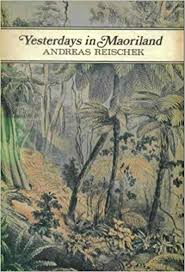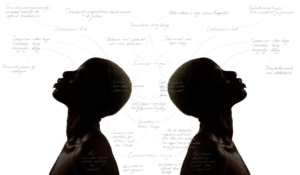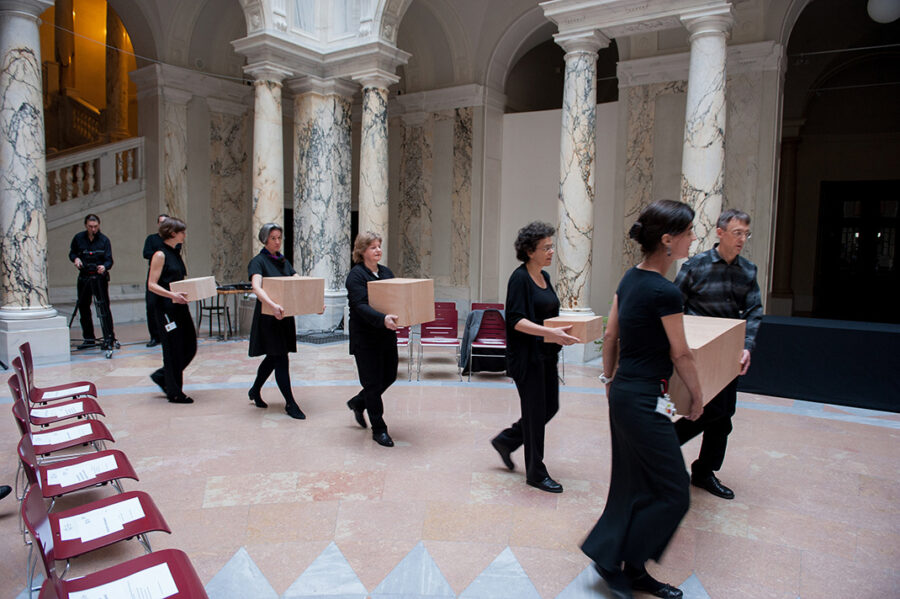The Natural History Museum of Vienna and Maori Repatriations
One of the most well-researched and recent cases of colonial repatriation requests come from the Maori populations of New Zealand in regard to their stolen ancestral remains by Austrian taxidermist, Andreas Reischek. During the late 19th century, Reischek extensively travelled across New Zealand, recording and collecting a variety of natural and ethnographic artefacts- which he hoped to later sell for profit to the Natural History Museum of Vienna (O’Hara, 2020, p. 438). The greatest point of contention from the Maori is in relation to the unlawful theft and transportation of the Kawhia mummies. These remains, belonging to a Maori man and child, were traditionally buried and protected within the Kawhia Caves. The rumoured presence of the mummies ignited Reischek’s interest in their acquisition, which he carried out in 1881 (Kolig, 1986, p. 59). Since this time, a century-long repatriation process began in an attempt to return the mummies to their rightful home. In 1985 the first of these repatriation requests was successful, and the body of Chief Tupāhau was safely returned and reburied in New Zealand. Despite this progression, the Kawhia mummies, alongside numerous other stolen remains, were still in possession of the Natural History Museum of Vienna.

Reischek’s published work of his New Zealand expeditions, Yesterdays in Maoriland, details his encounters with the Maori population, and the processes by which he obtained stolen remains. (Childs, 2017)
Mana and Tapu: Respecting Maori Funerary Tradition
Understanding not only the provenance, but also the religious and cultural significance of the Maori remains was essential in their repatriation. In the Maori tradition, mana represents the prestige and importance of an individual, while tapu is regarded as a sacred and ethereal place, which extended to graveyards and burial sites (Hole, 2007, p. 6). Despite a clear understanding of Maori tradition and belief, Reischek desecrated tapu during his removal of human remains from sacred areas, including the Kawhia mummies. In regard to anatomical significance, the head is believed to be the most sacred of body parts, and is in itself both an embodiment of mana and tapu. In Maori culture, the heads of relatives were kept and displayed during important events, and conversely, removed and displayed by enemy tribes as a sign of victory. However, in both instances, the theft or purposeful removal of a head from its resting place is a violation of tapu and could potentially result in death (Hole, 2007, pp. 6-7). When modern repatriation requests were first made in the aftermath of the Second World War, the pertinence of Maori religious values was not considered. Instead, the Austrian government defended the actions of Reischek by citing the outdated and controversial methods used by many 19th century anthropologists. It is not until the 1980s, during which the first set of repatriations began, that the cultural significance of these remains to living ancestors was examined in greater detail.
Te Papa and the Natural History Museum of Vienna: Modern Reconciliation
Following the return of Tupāhau’s body to New Zealand in 1985, repatriation programmes in New Zealand began to accelerate, particularly that of the Museum of New Zealand, also known as Te Papa. The museum sought to repatriate both Maori and Moriori remains to their living ancestors, and restore a level of dignity and respect to the remains which were stolen. Within Te Papa works the Repatriation Advisory Panel, composed of local tribal members, who research in-depth the provenance of stolen remains, the areas they may have once belonged to, and the burial customs which are most suitable for each individual (O’Hara, 2020, p. 448). Since the onset of the programme in 2003, over 400 Maori individuals have been returned home from institutions across the globe. In September 2022, the Natural History Museum of Vienna formally recognised the role they played in the illegal and controversial obtainment of Maori remains, and conducted a repatriation ceremony before the return of 64 individuals to New Zealand, including the Kawhia mummies (nhm-wien.ac.at).

Repatriation Ceremony at the Natural History Museum of Vienna. (Roßbroth F., 2022).
Informing Future Projects and Research
Unfortunately, the narrative of 19th century anthropological research in foreign countries is not unique to Reischek and Austria. Institutions across Europe are left to confront unpleasant histories which were written by their predecessors. Within the University of Edinburgh, the Skull Collection of the Anatomical Museum awaits further investigation into the provenance of the remains, the issue of display, and ongoing repatriation requests. Thinking of the ways in which the Natural History Museum of Vienna approached the issue of their Maori collections, we can inform future decisions on the projects happening within our own community. Members of the NHM Vienna staff have taken part in lectures discussing the looted remains within the museum (https://www.youtube.com/watch?v=Zo8MMl_Hjtk) as well as establishing a committee dedicated to provenance research. With these ideas in mind, it may be beneficial to the Skull Collection to establish a similar committee- whether amongst students or faculty, which is dedicated to the research of origin and cultural value within the collections.
In 2011, Te Papa opened an exhibition called Tai Timu, Tai Pari, Tainui: Journey of a People. This exhibition explored the dynamic between ancestral remains and colonial acquisitions, sparking a renewed interest in the repatriation of Maori individuals within local tribal groups. In regard to the University’s Skull Collection, the inclusion of art in place of human remains is a possible route forward when navigating these difficult narratives. It is important as scholars that we do not erase the history of how these skulls were obtained, but rather challenge this history by honing in on our own human instinct to restore and honour the dignity of these people in the most appropriate way possible- including repatriation with modern ancestors. Pulling from the ideas of the Te Papa projects, repatriated remains should always return to their country of origin when possible, and should be thoroughly researched and examined by the indigenous communities to which they belong. The intersection of art and repatriation could be analysed further within the Skull Collection as a means of acknowledging our own modern thoughts and feelings, as well as openly discussing and investigating the racial and colonial standards which were in place within our own University system at the time. A potential starting point for such research can occur within our own local galleries and museums, researching artwork and artists whose provenance correlates to that of the skulls held in the anatomical museum. As is the case for both the NHM Vienna and the University Skull Collection, human remains should not be seen as traditional static objects. These remains are continuously evolving and unearthing histories which assist in revealing many of the outdated and systemic issues within museums and galleries today.

Fitting the Character by Tayo Adekunle, a British Nigerian artist, is a 2021 work commissioned by the University of Edinburgh. This piece highlights the inherently racist practice of phrenology used within the Skull Collection. This artwork is a catalyst from which other artists can respond to the collection through artistic expression. (Adekunle, 2021).
Bibliography
Adekunle, T. 2021. Fitting the Character. [Online]. [Accessed 11 October 2022]. Available from: https://exhibitions.ed.ac.uk/exhibitions/mind-shift/fitting-the-character
Childs, R. 2017. The Amazing Andreas Reischek. [Online]. [Accessed 10 October 2022]. Available from: https://kapitiindependentnews.net.nz/the-amazing-andreas-reischek/
Hole, B. 2007. Playthings for the Foe: The Repatriation of Human Remains in New Zealand. Public Archaeology, 6(1), 5-27.
Kolig, E. 1986. Andreas Reischek and the Maori: Villainy or the Nineteenth-Century Scientific Ethos? Pacific Studies, 10 (1), 55–61.
Naturhistorisches Museum Wien. 2022. Repatriation Ceremony for Ancestors Returning to Aotearoa New Zealand. [Online]. [Accessed 10 October 2022]. Available from: https://www.nhm-wien.ac.at/en/presse/pressemitteilungen2022/repatriation_aotearoa
O’Hara, C. 2020. The Andreas Reischek Collection in Vienna and New Zealand’s Attempts at Repatriation. In: Cressida, F., McKeown, T. and Keeler, H. ed(s). The Routledge Companion to Indigenous Repatriation. 1st edition. Routledge: 438–451.
Roßbroth F., K. 2022. Repatriation Ceremony for Ancestors Returning to Aotearoa New Zealand. [Online]. [Accessed 11 October 2022]. Available from: https://www.apa-fotoservice.at/galerie/30676

